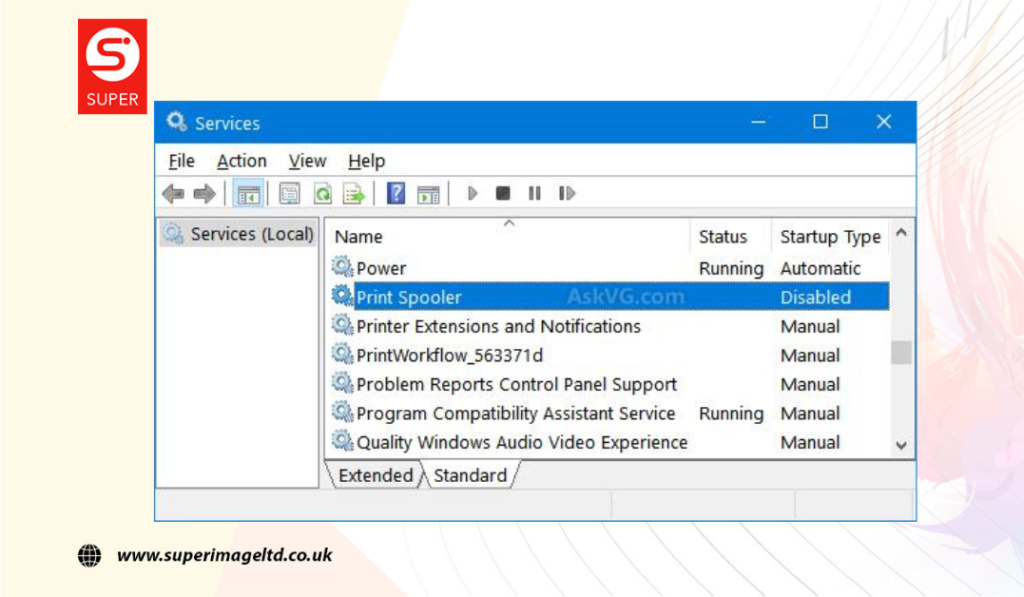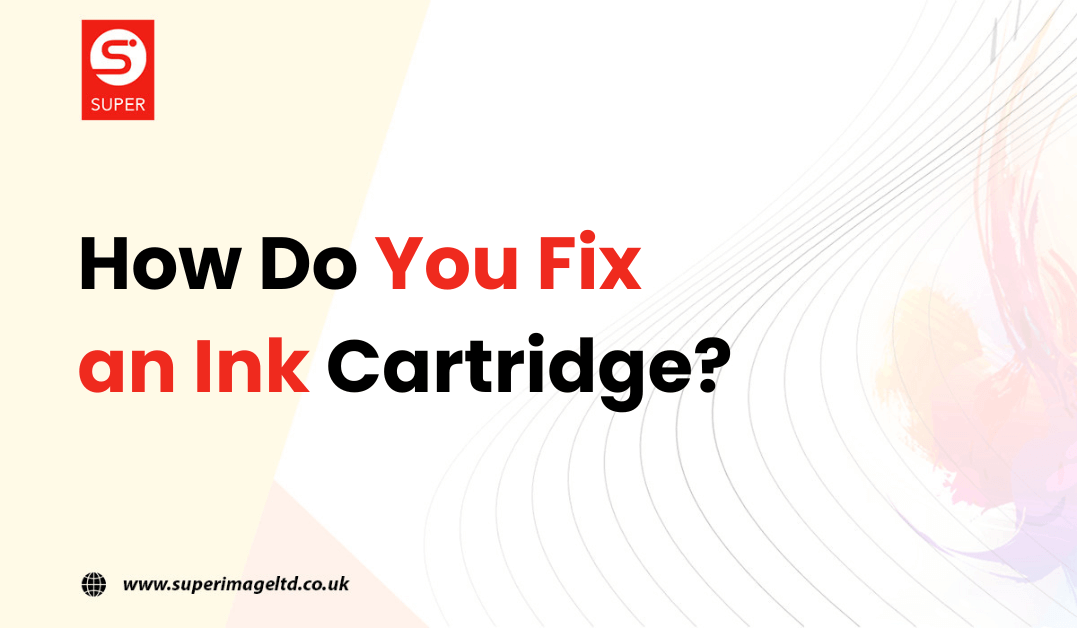Ink cartridges play a vital role in producing high-quality printed documents and photos. But like all consumables, they remain prone to technical glitches degrading quality over time.
Dealing with ink cartridge issues can be a major inconvenience, interrupting essential printing needs. Learning the typical problems plaguing print quality plus basic troubleshooting, maintenance, and even DIY repair techniques helps maximize longevity minimizing replacement hassles.
This comprehensive guide will cover how do you fix an ink cartridge, common cartridge errors, resolution approaches, and prevention tips – helping resuscitate output while saving resources.
Common Ink Cartridge Problems
All printers rely on properly functioning ink cartridges for flawless output, but gradually common ink cartridge issues emerge needing solutions as components decline with extensive use. Early troubleshooting allows quick corrections preserving quality.
Clogged Nozzles or Print Head
As a common irritant plaguing output quality, clogs obstruct the print head’s tiny nozzles spraying ink and inhibiting uniform transfers onto paper shown through streaked fonts, incomplete fills, or granular, uneven prints.
Dust particles, residue, and dried ink contribute to repetitive use. Catch early before permanent block crystallization.
Faded or Streaked Pages
Gradually washed-out pages resulting in faint unreadable text and graphics indicate dwindling colorant levels on specific cartridge channels needing replacements.
Some streaked output stems from clogs partially blocking subset nozzle spray paths manifesting laterally across pages moved through printers clear upon close inspections.
Leaking Cartridges
Sometimes handling shocks and vibrations inadvertently damages cartridge housing seals from drops or shifting printer assemblies allowing ink leakage through cracks and staining internal trays requiring wipe-downs.
Alternatively, attempted cartridge modifications like drill holes adapting for refills likely undermine structural integrity unless following precise guide instructions.
Error Codes: Incompatible Cartridges
Models with auto-detect chips interfacing with printers may generate “incompatible cartridge” errors if replacing OEM branded supplies with cheaper aftermarket varieties lacking proper onboard electronics emulating original communications. Unfortunately bypassing the warnings risks damaging printers nullifying warranties.
Troubleshooting Ink Cartridge Issues
Before attempting intensive cartridge repairs or costly replacements at initial signs of print defects, troubleshooting ink cartridge issues helps isolate true root causes guiding appropriate corrections where possible.
Nozzle Health Test Pages
Most printers contain built-in test cycles specifically assessing nozzle spray performance printing pages with color blocks. Examine results identifying missing lines signaling clog locations. Rerun after head cleanings verifying output improvements from the diagnostics isolating issues.
Software Driver Conflicts

If cartridges are suddenly undetected, check for print spooler service disruptions in computer OS system logs. Updated unrelated drivers occasionally break subsystem chains preventing recognition. Roll back or reinstall printer software suites to resolve, or try cartridges functioning in alternate working devices pinpointing root causes.
DIY Ink Cartridge Repair
While some cartridge issues require leaving repairs to qualified technicians equipped with specialized electronic testing tools, common hands-on fixes like clearing minor clogs or replacing worn damper components prove manageable using basic DIY ink cartridge repair techniques when armed with the necessary materials for delicate disassembly procedures.
Follow the below step-by-step ink cartridge repair guide for easy DIY repair:
Required Tools and Materials
- – Rubbing alcohol, distilled water
- – Paper towels, cotton swabs
- – Small Phillips screwdriver
- – Flashlight
- – Replacement parts like wipers, dampers
Disassembly
- – Carefully place the cartridge on a flat surface avoiding tilts leaking ink
- – Locate the screw holdings on the bottom plates and unfasten them fully
- – Gently pry apart housing. Components are fragile!
Assess Internal Parts
- – Shine light checking print head, wipers condition
- – Examine inner edges for ink build-up and leaks through cracks
- – If dampers are dirty, replace absorbing future mess
Clean Clogs Through Soaks
- – Soak just print head in alcohol/water mix for 10 mins
- – Lightly dampen cotton swab-cleaning nozzle plates directly
Reassembly & Reset
- – Allow parts to fully air dry before reattaching housing to avoid leaks
- – Carefully reconnect plating ensuring aligned during screw refastening
- – Insert cartridge prompting chip reset defining filled state
- – Run printer clean cycles clearing residual cleaning mixes
Professional Repair Support
While light cleaning and basic component swaps are manageable DIY, malfunctioning electrical contacts communicating ink levels to printers require electronic tools probing systems.
Unless you own circuit testers multimeters for signal verifications, seek professional troubleshooting avoiding improper handling and only compounding matters through well-intentioned curiosity tinkering. Certified repair shops address complexities.
Locating Reputable Repair Services
Search locally for dedicated ink cartridge specialists with proven technicians’ mastery of systematic flow chart testing Original cartridges specialized equipment. Browse reviews before commitments.
Chain printer stores subcontract. Quality matters ensuring functional restoration not just quick fixes failing afterwards. Ask about warranty coverages guaranteeing performance.
Preventing Ink Cartridge Problems
Applying consistent careful usage and storage methods prevents many avoidable ink cartridge issues stemming from component damage vulnerability when mishandling models. Simple habit adjustments preserve operational lifespans.
Avoid Excessive Heat Exposure
Store unused cartridges in cool dry locations away from cars, garages, and closed drawers accumulating extreme temperatures and degrading sensitive internal components. Direct sun even through windows damages. Ideal office range 60-80F.
Handle Cartridges Carefully
Jostling model-specific cartridges risks unseating internal dampers. Strong impacts possibly crack tiny nozzle plates too. Gently insert replacing models directly avoiding rough transports. Side drops spell disaster.
Schedule Routine Cleanings
Don’t allow dried permanent blockages. Initiate occasional page purge and cleaning cycles in printers sensing light use periods. Follow maintenance reminder alerts depending on model intelligence sensing declining output automatically. Stay ahead mitigating costlier involved servicing down the line or outright replacements if neglecting upkeep.
Pursue Eco-Friendly Cartridge Solutions
As environmental consciousness around consumables waste enters societal mainstream thinking lately, everyday printer users increasingly grapple with balancing continuous printing needs against landfill and plastic pollution impacts from disposing of depleted ink cartridge models over time.
Multiplied by overall consumption volumes, the waste accumulates substantially if unaware of alternative earth-friendly solutions.Thankfully multiple solutions allow conscientious consumers to diminish disposable cartridge waste by supporting green principles:
Recycle Programs
Rather than trashing expired empty cartridges exacerbating landfill plastics, proactively participate in printer manufacturers’ return recycling programs reusing base materials, while supporting jobs and ethically gaining reward points toward future discounts. Seek designated drop points like UPS stores to streamline logistics.
Consider Refills
Using specialized vial kits from third parties allowing reliable controlled refills on compatible cartridge models offers huge savings over Original replacements while reducing repeat disposable waste supporting green principles.
Avoid messy universal bottles though. Carefully research vendors guaranteeing modifications sustaining integrity and avoiding leaks from drill points.
Additional Maintenance Tips
Beyond Ink cartridge problems and solutions covered earlier, some supplemental maintenance techniques further nurture ink cartridge lifespan maximization:
Avoid Ink Drying Through Regular Use
Infrequently operated printers allow ink drying inside low usage cartridges – avoid sticking deposits permanently clogging print heads nurturing future problems once wanting to resume outputs. Thus make an effort to print occasional test pages.
Always Keep Cartridges Installed When Possible
Repeated installations and removals wearing down cart electrical board connectors reduces system integrity risking faulty communications saying empty prematurely prompting unnecessary model disposal if unaware of usage history.
Store Extras Properly In Sealed Dark Cool Spots
Whether stockpiling spare cartridges for models prone to needing frequent ink replenishments or owning backups intended to prevent workflow interruptions from exhausted colors, strictly keep uninstalled ones inside factory packaging within moderate climate conditions away from light preventing shortened shelf lives from heat or freezing damage possibilities before requiring the supplies critically.
Remove only when immediately needed installing printers noting remaining expiration timeframes referenced on labels during replacements.
Conclusion:
The answer for the question “How do you fix an ink cartridge” is quite simple. Focus first on prevention by carefully maintaining cartridge health to optimize lifespan over years of robust prints.
Be aware of common ink cartridge problems degrading quality over time through heavy usage. Use strategic troubleshooting workflows to isolate the root causes of issues as soon as any defects emerge.
Basic at-home maintenance resolves many early clogs or faded prints. If issues grow complex requiring intricately specialized repairs, seek professional assistance.
With diligent care in proper handling, storage and pursuing eco-friendly recycles and refills, owners can sustain reliable print performance while being prudent with waste.
The best fixer strategy ties directly to maximizing longevity proactively, not reacting to fully damaged goods requiring intensive replacements frequently.
FAQ’s
Use a lint-free cloth and warm water to gently wipe the nozzle, or run the printer’s cleaning cycle.
Soak the cartridge in warm water or use a specialized cartridge cleaning solution to revive dried ink.
Ensure the cartridge is properly installed, contacts are clean, and firmware/drivers are up to date.
Some printers allow manual reset through the settings menu; refer to your printer’s manual for instructions.
Avoid overfilling, store cartridges upright, and ensure they are compatible with your printer model.

I do agree with all the ideas you have introduced on your post They are very convincing and will definitely work Still the posts are very short for newbies May just you please prolong them a little from subsequent time Thank you for the post
you are in reality a good webmaster The website loading velocity is amazing It sort of feels that youre doing any distinctive trick Also The contents are masterwork you have done a fantastic job in this topic
you are truly a just right webmaster The site loading speed is incredible It kind of feels that youre doing any distinctive trick In addition The contents are masterwork you have done a great activity in this matter
Just wish to say your article is as surprising The clearness in your post is just cool and i could assume youre an expert on this subject Fine with your permission allow me to grab your RSS feed to keep updated with forthcoming post Thanks a million and please keep up the enjoyable work
I have been surfing online more than 3 hours today yet I never found any interesting article like yours It is pretty worth enough for me In my opinion if all web owners and bloggers made good content as you did the web will be much more useful than ever before
I do not even know how I ended up here but I thought this post was great I dont know who you are but definitely youre going to a famous blogger if you arent already Cheers
I like this website very much, Its a very nice post to read and get information.Raise blog range
Somebody essentially help to make significantly articles Id state This is the first time I frequented your web page and up to now I surprised with the research you made to make this actual post incredible Fantastic job
Its like you read my mind You appear to know a lot about this like you wrote the book in it or something I think that you could do with some pics to drive the message home a little bit but instead of that this is fantastic blog An excellent read I will certainly be back
Thank you I have just been searching for information approximately this topic for a while and yours is the best I have found out so far However what in regards to the bottom line Are you certain concerning the supply